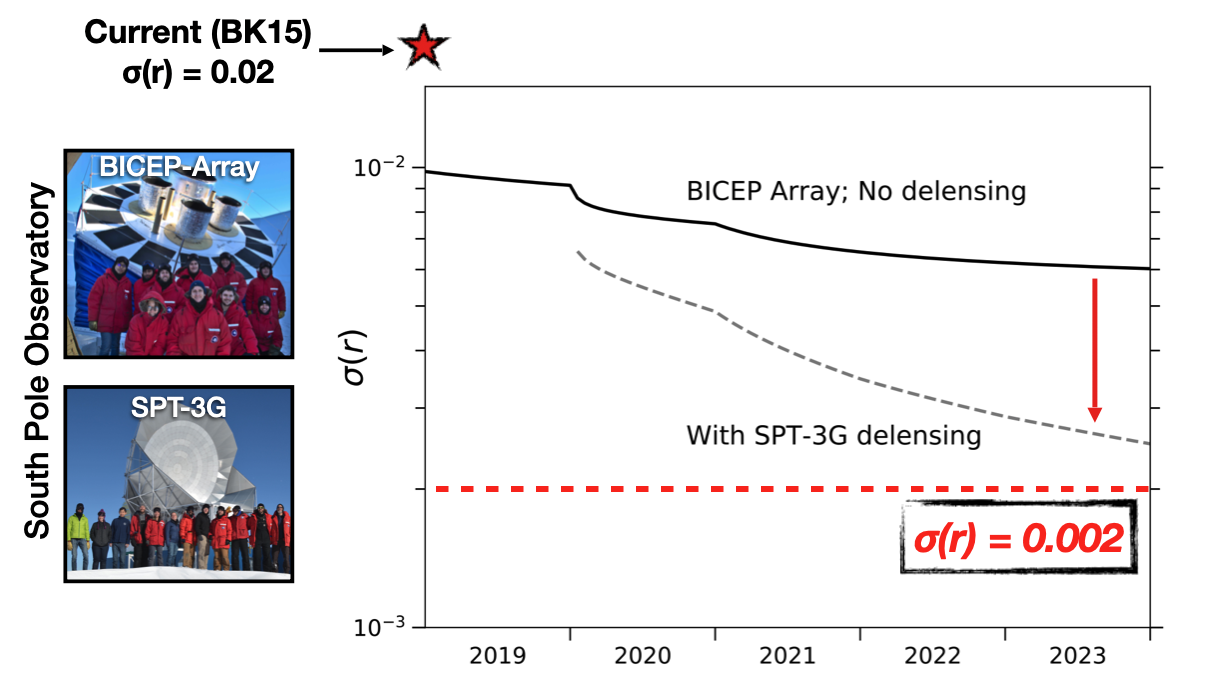
Inflation and Primordial Gravity Waves
Working in collaboration with the BICEP/Keck team, we will use the high-resolution SPT-3G data to remove the gravitational lensing signal from BICEP Array maps to enable a deep search for primordial gravitational waves (PGW). The full SPT-3G data set will allow delensing of BICEP Array data that could improve constraints on PGW by more than a factor of two, achieving an uncertainty on the tensor scalar ratio of 0.0025, nearly an order of magnitude better than current constraints.
Cosmology and Dark Energy
Current cosmological data hint at the need for new physics. Particularly intriguing is the current tension between the Hubble constant measured from local probes of expansion and inferred by CMB measurements from the Planck satellite. SPT-3G will improve on the current state of the art constraints on CMB anisotropy measurements by factors as large as 20, especially at small-scales where some of the most intriguing hints of parameter shifts appear in CMB data. The resultant SPT-3G cosmological constraints will be comparable to Planck, but largely independent coming from small-scale polarization information, leading to factors of two improvements in Hubble constant constraints when combined.
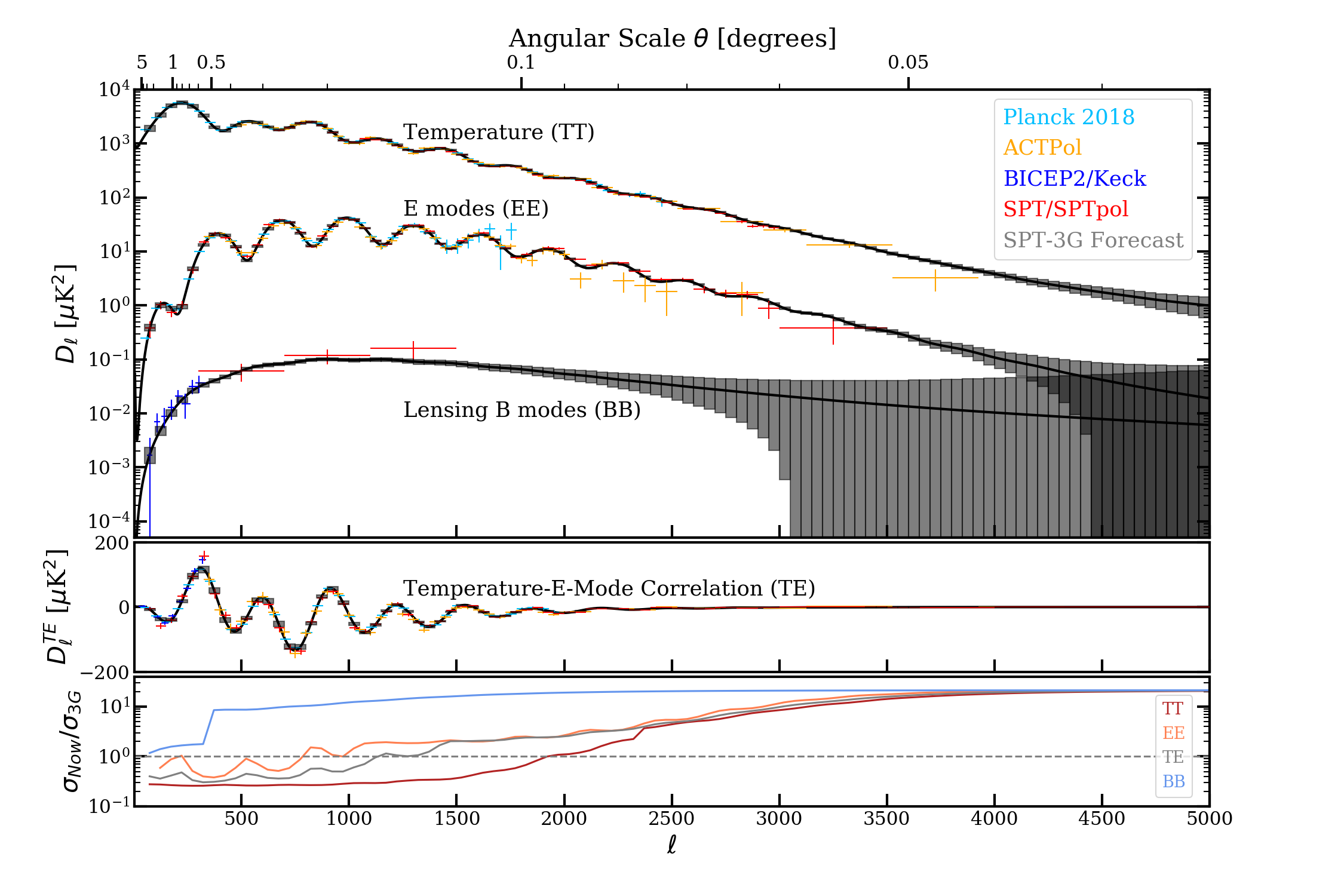
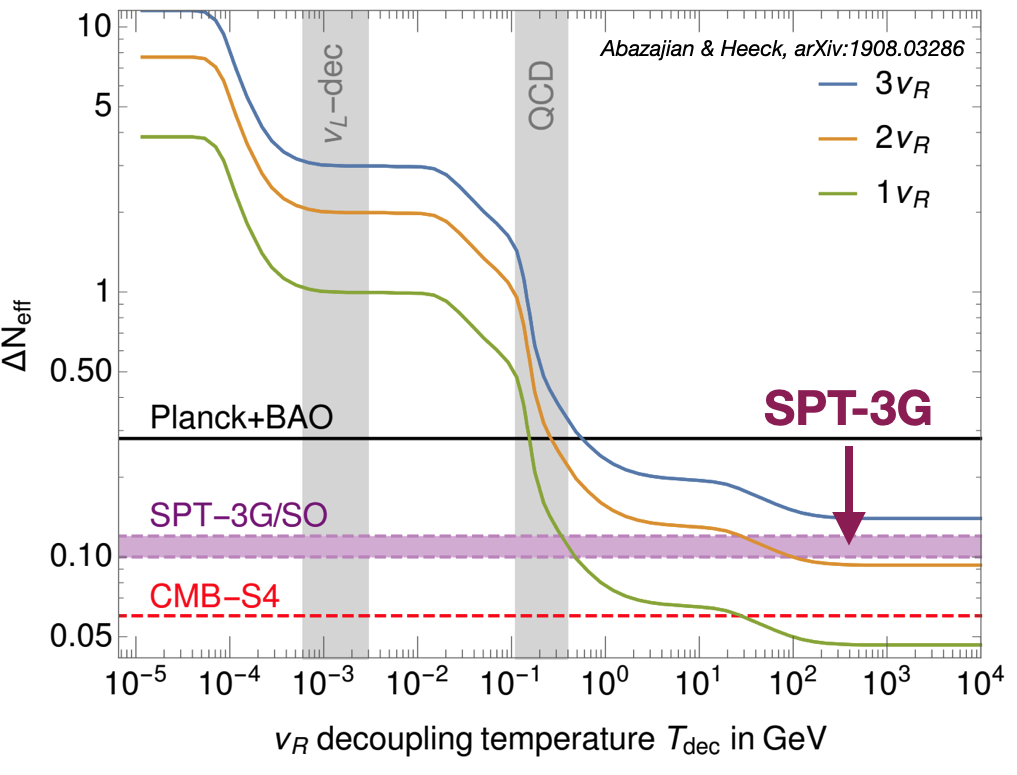
Neutrinos and Light Relic Particles
A common feature of many extensions of the Standard Model of particle physics to higher energies is the existence of new light particles. If any such particle was ever in chemical equilibrium with Standard Model particles, it will leave its mark on the CMB via its contribution to the total energy density, and hence the expansion rate, which have made them popular to consider as one solution to the current tension in the Hubble constant. Constraints are often characterized as the change in the number of effective relativistic species from the standard model prediction. SPT-3G will improve upon current constraints by a factor of two, and allow testing of more complex models of Big Bang Nucleosynthesis (BBN).
First Galaxies, Protoclusters, and Galaxy Clusters
The unique combination of resolution, depth, and area of SPT surveys are ideal for constructing catalogs of the most distant galaxy clusters and extragalactic mm-wave sources. The high-redshift (1 < z < 2) portion of the SPT cluster sample is providing an ideal sample to extend detailed multi-wavelength studies, providing the target sample for observations by both current (XMM, Chandra) and future (Athena, Lynx) X-ray missions. Such data will enable better understanding of ICM cooling, AGN feedback, entropy injection, and metal enrichment at an era where clusters are rapidly evolving. At even higher redshifts, the process of massive galaxy formation can be traced into the first billion years of cosmic history through bright sources. These first massive galaxies mark the sites of the largest overdensities in the cosmic web and trace the formation of the dusty, molecular interstellar medium from the metal-poor and chemically simple raw materials present in the first galaxies. This sample of sources extends well into the epoch of reionization and presents a major challenge to galaxy formation models.


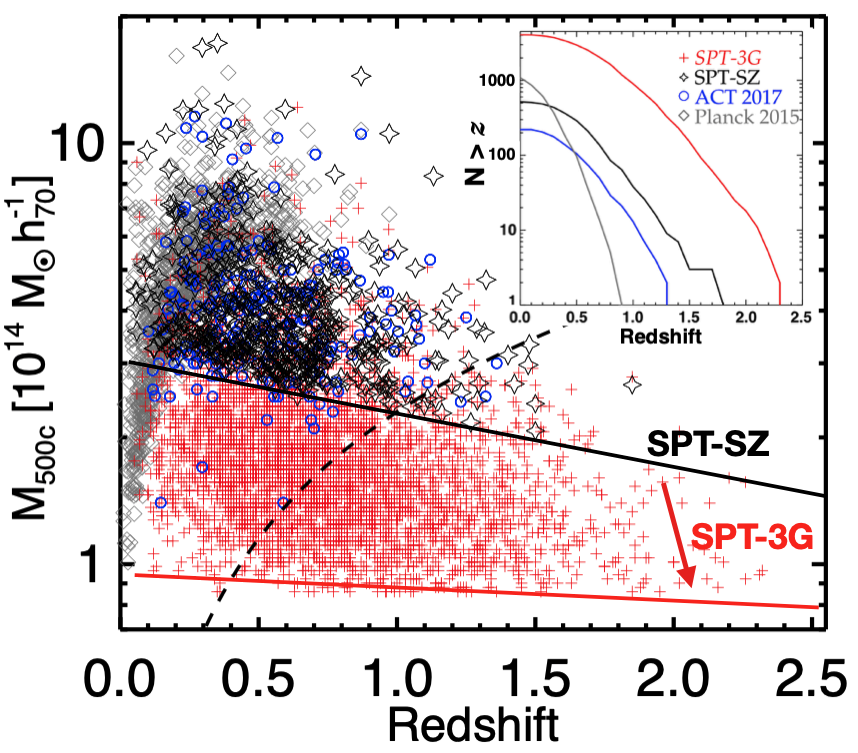
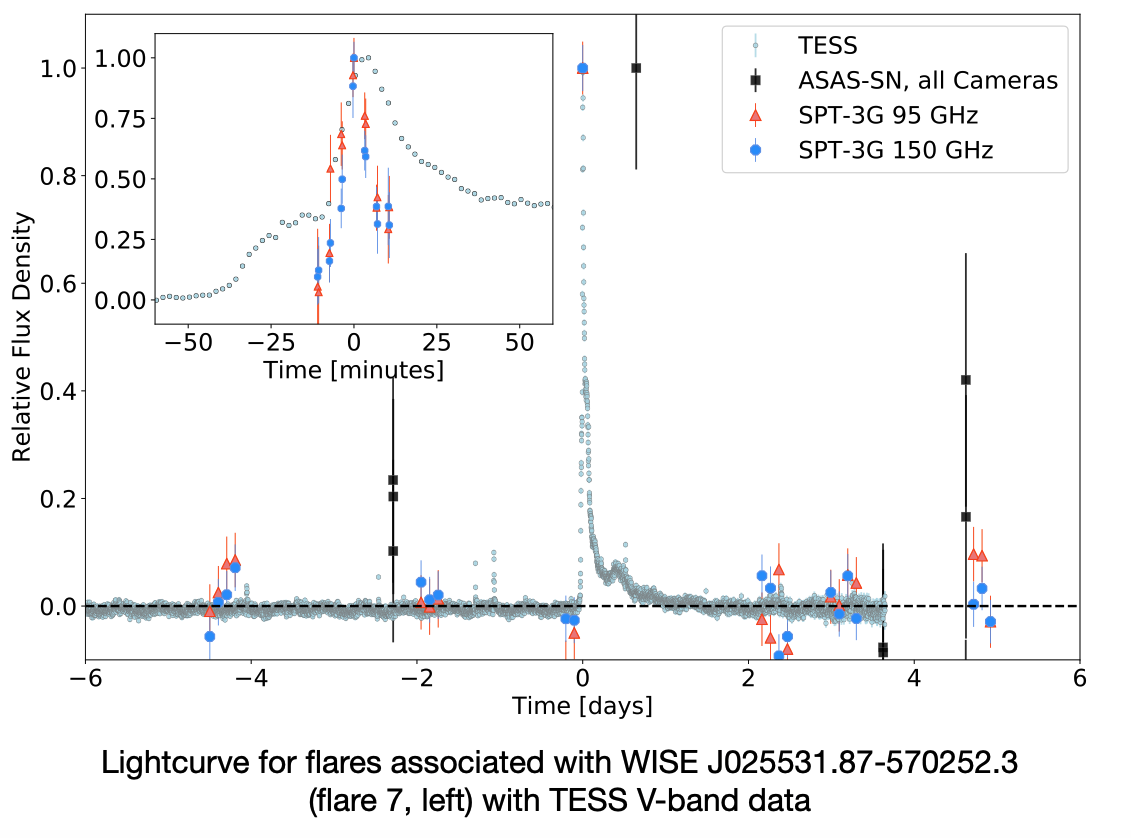
The Transient Universe
A major region of discovery space open to the current and next generations of CMB instruments is transient, or time-domain science. The results of the first transient search with SPTpol data (Whitehorn et al., 2016) demonstrated the potential of such searches to (for example) constrain models of gamma-ray bursts (GRB), or discover other new classes of objects (e.g., choked GRG bursts, first populations of stars, or flaring stars). More recently, Guns et al. (2021) reported the first discrovery of 15 mm-wave astrophysical transient events, both short-duration active-chromosphere stars, which can flare to above 1 Jy with durations from a few minutes to several hours, and another population of long-duration (~2-3 weeks) events of unknown extragalactic origin. A key new aspect in the SPT-3G era will be an almost real-time monitor for transient events, designed to interface with the alarm and monitoring systems in the broader astronomical community.
Black Holes and the Event Horizon Telescope
The goal of the Event Horizion Telescope (EHT) is to use a worldwide mm/submm VLBI network to measure the structure of the black hole at the center of our galaxy (Sgr A*) at a resolution of 15–20 micro-arcseconds. The angular size of the event horizon of Sgr A* is ∼50 micro-arcseconds, so EHT will reveal the structure of black hole accretion flows and test General Relativity. Including baselines with the SPT will double the resolution of the experiment, and the exquisite sky conditions at the South Pole allow for efficient observing at higher frequencies than most EHT stations, which further increases the achievable resolution. The participation of the SPT is thus key to maximizing the EHT science return.

